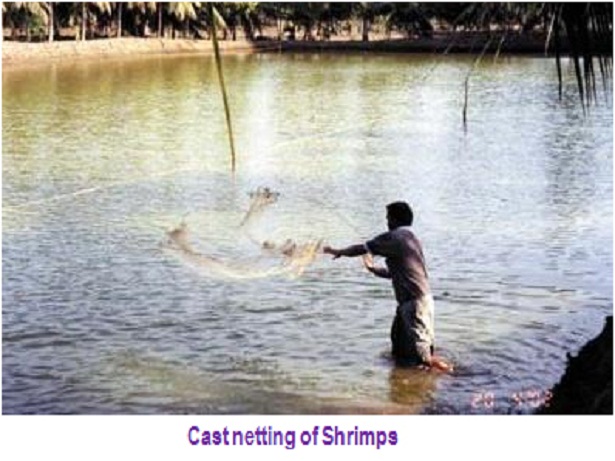In the essential nutrients in seed production or intensive culture, Ca and Mg contribute a decisive role in the quality of water and animal health in ponds.
Nature of water
In aquaculture environment, aquatic animals can absorb calcium (Ca) and magnesium (magnesium) through water or food. Ca and Mg concentrations are rarely measured in ponds, but they determine the total hardness of pond water. Hardness is defined as the concentration of divalent cations that are primarily calcium and magnesium in water, expressed in mg / L (ppm) of equivalent calcium carbonate.
Hardness can be expressed in different forms: total hardness and hardness Ca difference is hardness Mg; Total hardness is the sum of Ca's hardness and Mg hardness. The factors to switch between cationic hardness and hardness are as follows: Ca = Ca x 2.5 and Mg hardness = Mg 4.12 hardness. In particular, lime is widely used in aquaculture derived from limestone, contributing to the hardness of water.
In fresh water, most hardness and alkalinity are similar and range from <5 to 150 mg / L. In arid regions, the hardness usually exceeds 100 mg / L and is greater than alkalinity.

Essential Nutrition
Ca and Mg are essential nutrients needed for ponds and aquatic animals. Fish need Ca to grow the couch. However, the amount of Ca is only 2 mg / L in the phytoplankton - the most abundant plant in the pond and the Mg is almost rare.
Ca plays an important role in the water supply system for nurseries. If the hardness and alkalinity in the tank are high, it can lead to the precipitation of calcium carbonate salts. Aquatic animals can get Ca and Mg from the water and feed them. Normally, Ca and Mg are fully replenished for livestock, however, Ca and Mg are fed through low feed. In low alkaline ponds, Ca and Mg are also low in concentration and need to be added to improve lime.
In freshwater ponds in arid areas or ponds filled with estuarine or seawater water often have high hardness for aquaculture. When these lakes are soaked, they accumulate higher alkalinity than hardness. From the perspective of aquaculture productivity, alkalinity is a more important indicator than hardness.
Applying the amount of phosphate required to maintain the phytoplankton in the pond can increase the concentration of Ca, especially when the pH is raised. For example, to produce the same amount of tilapia, the amount of phosphate in Israel's fish pond is three times higher at 300 mg / L hardness than in Alabama, with a hardness of about 45 mg / L.

Other roles
In addition to acting as an essential nutrient, Ca is also effective in reducing pH when high rates of photosynthesis occur. When algae grow, they will deplete the carbon dioxide, which can use bicarbonate as a source of CO2. But when using bicarbonate, will produce carbonate hydrolyses to increase the pH. At that time, Ca2 + will combine with CO32- to form CaCO3 to reduce CO32- and pH stability.
In ponds with high alkalinity and low Ca concentration, the pH will increase dangerously when photosynthesis in ponds is accelerated. At that time, calcium sulfate can be used to increase the concentration of calcium ions. If the hardness is equal to or greater than the alkalinity of about 2 mg / L, the required calcium sulfate is 1 mg / L.
Ca and Mg also have the ability to neutralize negative charge on clay particles, thereby forming floc to precipitate and deposit clay particles suspended in the pond and reduce the turbidity of the water. Calcium sulfate is often used to reduce the turbidity of the ponds by 1,000 to 2,000 kg / ha. At the same time, the presence of Ca2 + also reduced the toxic effects of some metal ions on carbohydrates by absorbing them.
Ca also plays an important role in providing nursing water for fingerlings. Minimal concentrations of calcium ion to ensure good hatchability are 10 mg / L for the eggs of the fish and 4 mg / L for the catfish. A recent study showed that the minimum Ca concentration for catfish hatcheries was 10 mg / L and was best for hatchability and survival of about 30 mg / L.

Concentration appropriate
For freshwater aquaculture ponds, the hardness and alkalinity suitable for the development of culture species is 60 mg / L. In some inland areas where low salinity leads to low levels of magnesium, the survival rate and growth of shrimp are affected. In this case, the Mg concentration is increased by adding magnesium sulfate or magnesium sulfate to the culture pond. Although, studies have not shown the ideal concentration of magnesium in low salinity ponds for shrimp culture, however, the Mg mg / L: ppt (salinity) ratio in seawater is about 40 :first. Thus, it is possible to estimate the concentration of Mg in the low salinity environment, by multiplying by 40 ppt. For example, in ponds with a salinity of 2.5 ppt, the appropriate Mg concentration would be 100 mg / L.
We are No.18 Son Ha Minerals Co., Ltd specializes in manufacturer and supplier on limestone powder and dolomite powder for aquaculture sector.
If you have interested in our products or need more information, please don't hesitate to contact with us.
No.18 Son Ha Minerals Co.,Ltd
Address: Mam Xoi Mountain, Thanh Son Commune, Kim Bang District, Ha Nam Province, VN
Telephone: +84 936 212 598
Hotline: +84 986 358 011 (Whatsapp / Wechat) - Mr. Thomas
Email: export2@shcgroup.vn
Skype: export2@shcgroup.vn




